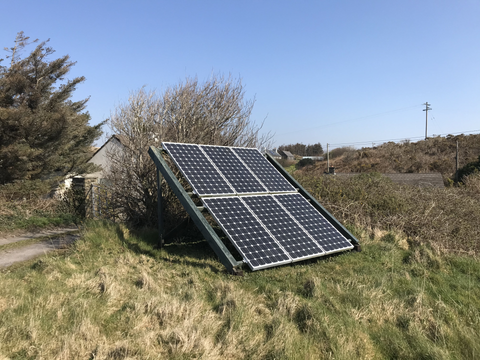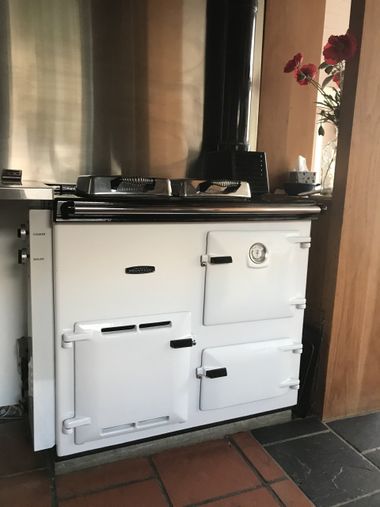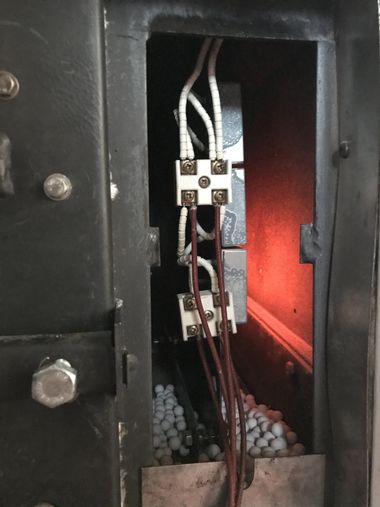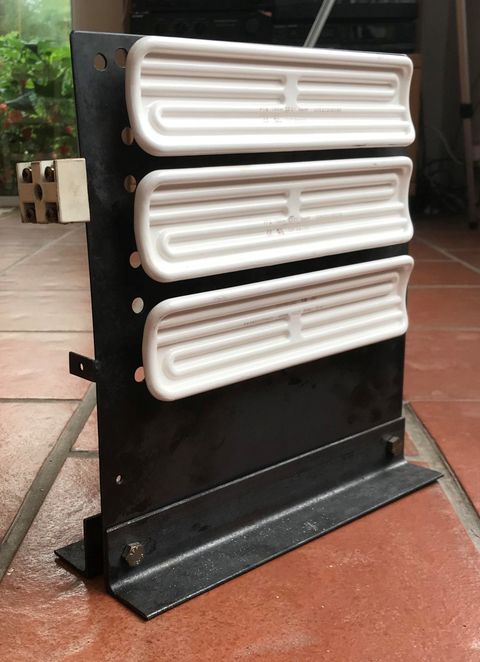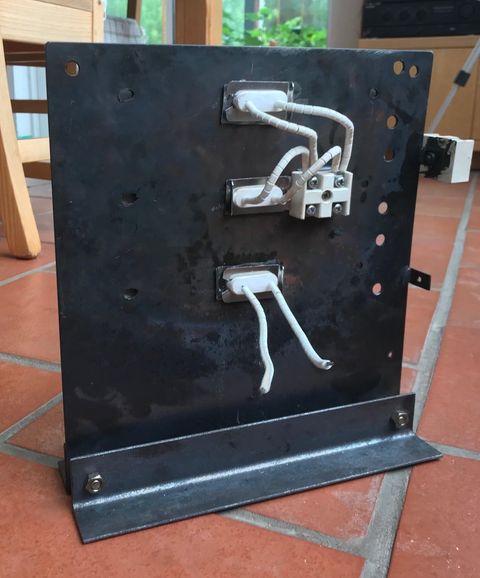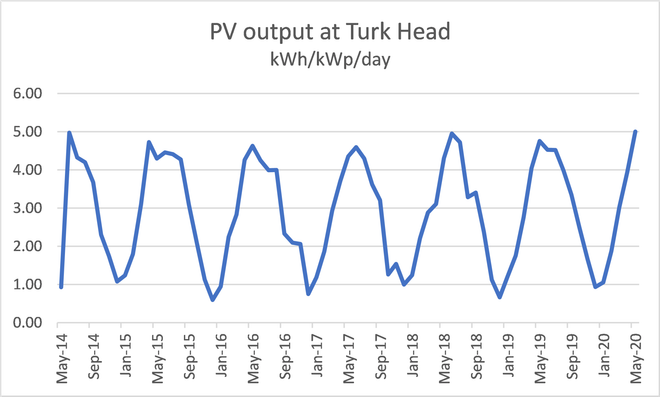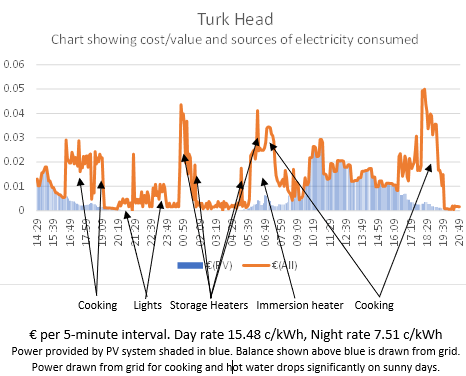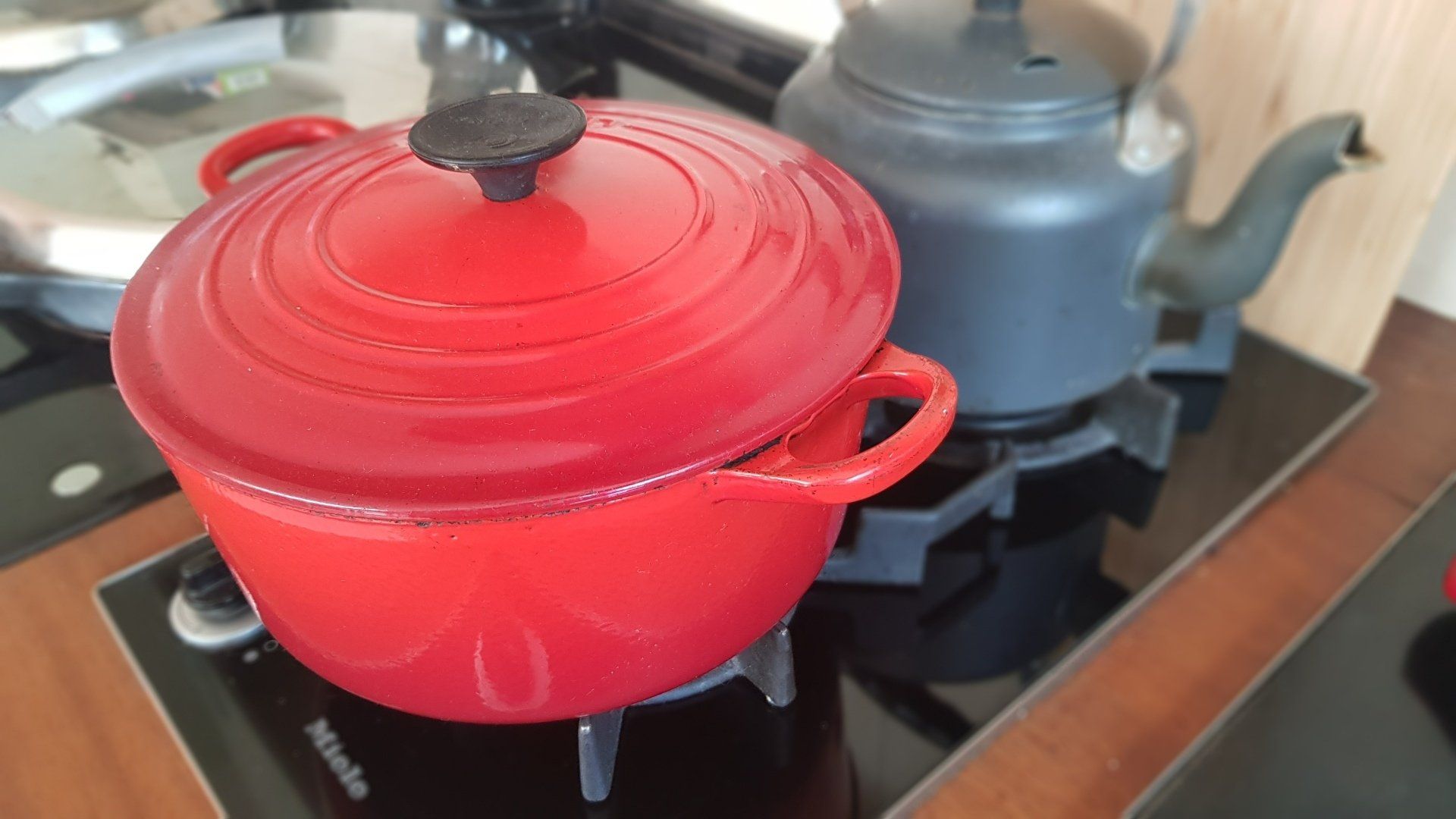Turk Head
Apr 06, 2020
Domestic dwelling with roof and ground mounted PV panels
This converted cottage is situated just outside Skibbereen in County Cork. It has both roof and ground mounted PV panels and has served as a base for both experimentation and data collection for thirteen years.
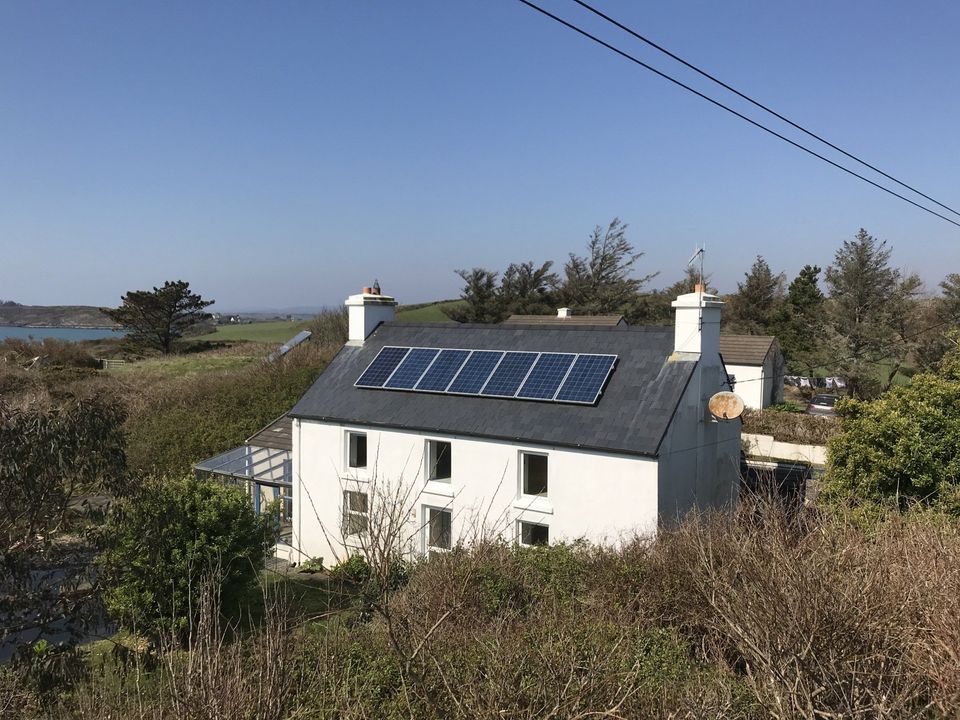
Roof panels
The position of the panels at this location is a compromise (as with most locations). The panels are fitted as high as possible on the roof to maximise exposure to early morning sunshine because of a low hill to the east (a local micro-climatic effect), whilst keeping below the chimney to minimise partial shading in the late afternoon. Microinverters are used to optimise unshaded output and minimise the effect of the partial shading.
The measured system output was 1,850kWh/yr (6-year average). The PVGIS calculated shade free output for this system is 1,834kWh/yr. The partial shading by the chimney would have reduced the system output to c.1,819kWh/yr if a string inverter had been used instead of microinverters. This shows how losses resulting from partial shading can be minimised.
The logged output from this system was compared with various simulator outputs out of interest – see below.
This site benefits from several local micro-climatic effects that result in an increased annual output. These include low levels of daily convective and prevailing wind/relief cloud development because of proximity to the coast, frequent rain washing and moderate summer temperatures. The PVGIS figure appears reflect some of these benefits.
The roof mounted system was commissioned on 25th May 2007 – see full six years output below;
Coastal PV
This tracking system consists of six 160Wp Solarfun panels, total capacity 0.96kWp. It was installed on an exposed, west-facing hill close to the house in 2007. These panels produced 44% more output than fixed panels, but had to be replaced by a fixed system in 2010 because of concern about storm damage.
Electric Rayburn
One of the most interesting projects in the house at Turk Head, is the development of a high temperature thermal store/cooker/heater for use in conjunction with solar PV installations. The first stage of this project involved the installation of a set of resistive heating elements in place of the oil burner(s) in a Rayburn cooker and then controlling them with a MyEnergi EDDI diverter and the original cooker and boiler thermostats. Once converted, the previously oil burning oven is charged with excess solar output during the day and draws whatever is necessary from the grid to bring it up to the desired temperatures as and when required.
The 25 year old Rayburn unit was absolutely perfect - flawless enameled cast iron finish with a large covered cast iron hot plate with both burners in perfect condition. Unfortunately, the cooker was burning copious amounts of oil, but was in such good condition that it seemed unreasonable to decommission it.
In order to convert the Rayburn, electric heating elements and high temperature cabling and connectors were sourced and manufactured locally in Ballydehob by Ceramicx. The three 750 W elements in the photo heat the oven and a small air to water heat exchanger (the original Rayburn unit). A fourth 750 W element is located under the hot plate. The bottom element is on permanently - mimicking the original oil burner and keeping the house dry. The other three are controlled by an EDDI and the original cooker thermostats. It works slightly better than the original system as far as cooking is concerned. It is also providing space heating and hot water.
The plan is to increase its thermal storage capacity by filling it with ceramic "marbles" and also to install a few more PV panels to bring it close to being fully RE powered. The resulting reduction in CO2 emissions is c.3,450 kg per annum
The graphs below demonstrate clearly the financial benefits of PV panels on a domestic home. They illustrate the power load required to run the house, the amount of energy supplied by the PV panels and the total draw-down from the grid. All data was recorded using an iPhone! The device was used to get a two-day representative snapshot of electricity consumption at Turk Head over one weekend. After downloading the OSnap App, the interval was set to 5 minutes with the flash on and the phone was secured in front of the meter. The phone was then connected to a charger and left running away for a day and a half. The end result was 365 snaps of the meter, which provided exactly what was needed to calculate the value of the PV output. This then showed that the PV system is reducing energy costs in the house at Turk Head by c.44% on unexceptional summer days.
Share
Tweet
Share
Mail

by A Rooney
•
27 Aug, 2020
Carrigbeg is a detached house in Dun Laoghaire built in 2009 with eight 160Wp Solarfun Monocrystalline PV modules on a south facing roof with a slope of c.35°. The DC output from the PV modules is converted into AC electricity by a Fronius IG15 inverter. The AC supply from the inverter is connected to the main household AC circuit. A MyEnergi Eddi controller diverts surplus PV output to a 3kW immersion heater in the HW tank. The house, which is occupied by two adults, is heated by a condensing gas boiler. Monthly energy consumption in Carrigbeg has been recorded since the Eddi controller was installed in February 2019. The resulting data set is summarised below;




